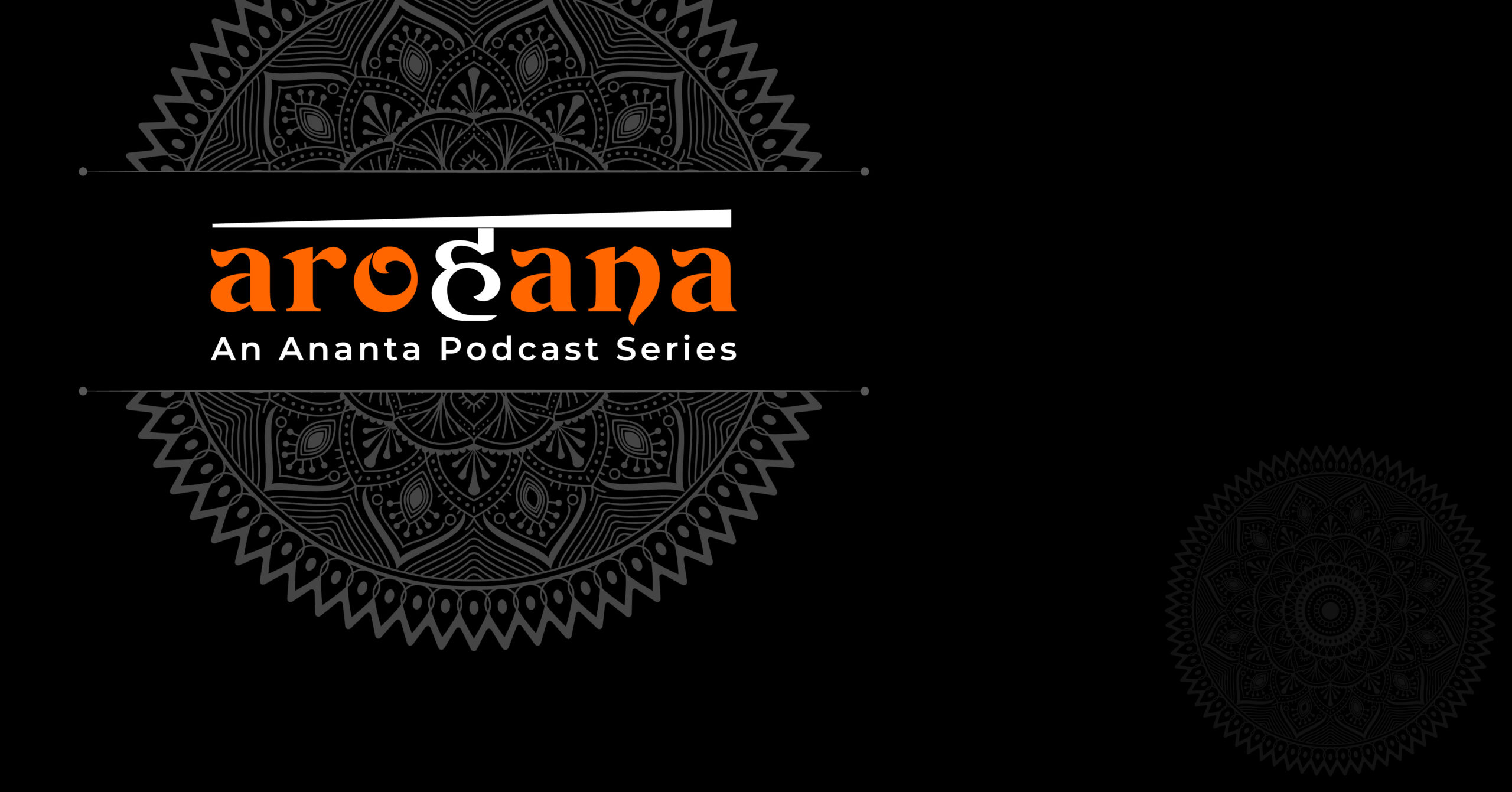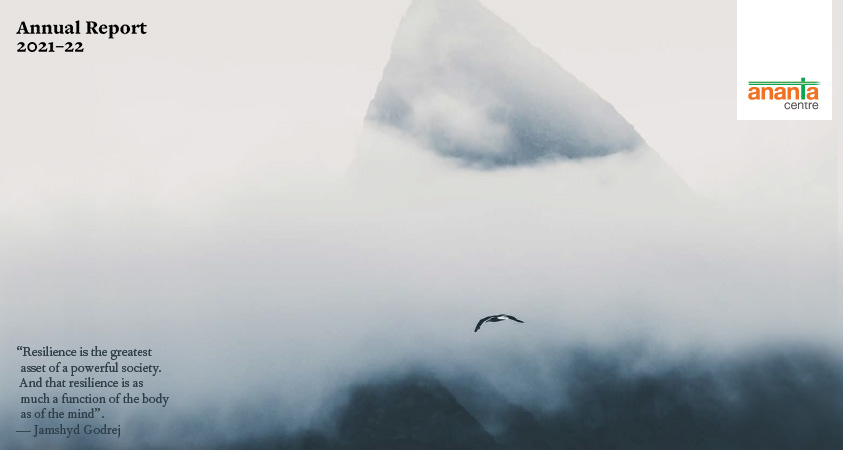HIGHLIGHTS
• Advantage Biden
• State Of the Battleground
• Surprises that may happen
• Pollsters believe they are right
• Ballots and Booths
Advantage Biden
With less than a fortnight before the United States voter goes to the polls, Joe Biden holds a narrow but steady lead among the battleground states that will determine who will be the next president. Biden and President Donald Trump held their last television debate on October 22nd. The debate was less ill-tempered than the first but, going by snap polls, has not changed voter attitudes.
As of October 25th, CNN’s poll of polls gives Biden, the Democratic Party candidate, a solid 10 percentage point lead over Trump nationally, fivethirtyeight.com gives Biden a lead of 9.1 points while realclearpolitics.com has him up by 8 points. Each gives different weightage to a poll depending on its quality.
Biden is ahead thanks to two constituencies. One is minority voters with whom he enjoys a wide margin of support. The other is the backing of a large chunk of middle-class whites – especially women. Trump’s support base remains the same: the white working-class.
Biden has been wooing working class whites in battleground northern states like Pennsylvania and Wisconsin and wavering southern states like Florida and North Carolina. He has had some success with working class women. Trump’s desire to win back female voters was probably behind the restraint he showed in the final debate. Otherwise, his strategy is inspire a massive turnout among his charged-up supporters and overwhelm Biden’s larger social coalition. But 93 to 94% of supporters in both parties say they are highly motivated, one reason the election may see a turnout not seen in a century.
One sign of Biden’s support is funding. The Democrats’ online funding platform, ActBlue, has received a record $ 1.5 billion from 6.8 million donors over the past three months. This is the highest total in the platform’s 15-year-old history. Even Democratic state legislative candidates have seen contributions triple in size. The Republican counterpart, WinRed, has raised $ 623.5 million over the past quarter.
“There are more known unknowns than we’ve ever had at any point,” says Tom Bonier, CEO of Democratic data firm TargetSmart. “The instruments we have to gauge this race, the polling, our predictive models … the problem is all those tools are built around quote-unquote normal elections. And this is anything but a normal election.”
If there is a single electoral statistic that differentiates Biden from Hillary Clinton, whom Trump defeated in 2016, it’s the support of white women. Trump led Clinton by nine percentage points among white women. In the 2018 midterm congressional elections the two parties split their votes in half. This election, Biden is leading among them by six percentage points.
Women have been the most disturbed by the president’s handling of the Covid-19 pandemic, his willingness to exacerbate racial tensions, and find his misogyny and personal character distasteful. Trump recognises the problem, recently imploring female voters at a rally, “Can I ask you to do me a favour, suburban women? Will you please like me? Please.”
Within this demographic, Trump is experiencing less support even among working class white women. This is a huge drawback. Non-college educated white – education is used to define working class in the US – are the foot soldiers of the president’s “Make America Great Again” movement. Clinton fell behind Trump with working class whites by 25 percentage points. Thanks to women and the elderly, Biden has halved this gap.
The Democratic Party, say some, is becoming the natural party of women. Female voters are more likely to favour an “activist role for government” and more concerned at the overall welfare of the country. Men place greater salience on economic issues and are warier of state support.
http://go.pardot.com/e/827843/fe778ee5e9cabacc71-utm-source-/8hwcl/103129053?h=WoFBzLBshJX_TT0M6Dfkq_VSggcRjTYjdE4gd475HNQ
http://go.pardot.com/e/827843/den-black-latino-voters-417473/8hwcn/103129053?h=WoFBzLBshJX_TT0M6Dfkq_VSggcRjTYjdE4gd475HNQ
http://go.pardot.com/e/827843/-gender-gap-2020-election-html/8hwcq/103129053?h=WoFBzLBshJX_TT0M6Dfkq_VSggcRjTYjdE4gd475HNQ
http://go.pardot.com/e/827843/50-4fdd-80ae-dfb93fa041f7-html/8hwcs/103129053?h=WoFBzLBshJX_TT0M6Dfkq_VSggcRjTYjdE4gd475HNQ
http://go.pardot.com/e/827843/tory-democrats-election-430013/8hwcv/103129053?h=WoFBzLBshJX_TT0M6Dfkq_VSggcRjTYjdE4gd475HNQ
http://go.pardot.com/e/827843/15-billion-in-donations-429549/8hwcx/103129053?h=WoFBzLBshJX_TT0M6Dfkq_VSggcRjTYjdE4gd475HNQ
State of the Battleground
Pollsters differ on what exactly constitutes a battleground state. Realclearpolitics.com tracks Pennsylvania, Wisconsin, Michigan, Arizona and North Carolina. Electoral-vote.com’s “tipping point states” includes these six but adds Minnesota, Nevada, Florida, Iowa, Ohio, Georgia and Texas. Fivethirtyeight.com’s analysts are coming to feel Biden’s margins in Pennsylvania, Minnesota and Wisconsin mean that only Georgia, Texas, Iowa and Ohio are going to the line. Democratic super-political action committee, Priorities USA, believes there are just six core battleground states: Pennsylvania, Michigan, Wisconsin, Florida, Arizona, and North Carolina.
Biden’s margin of support in the upper Midwest has slowly but surely increased through September and October. Minnesota, Wisconsin and Michigan polls show his lead widening to 7-9%. Pennsylvania, Arizona, North Carolina and Florida are for Biden by 3-5%, hovering above the statistical margin of error. The real surprise is a cluster of southern and Midwest states like North Carolina, Texas, Iowa and Ohio which were seen as pink to crimson before the pandemic but are now competitive.
Trump having to spend precious days campaigning in Florida and Iowa, states once seen as in the bag is a bad sign for him. Biden, on the other hand, is swinging by Ohio and North Carolina because he feels he can push these now purple states on to his side. No candidate can be certain about a dozen states. Biden may be ahead in all of them, but his lead is half or less of what he has at the national level.
Trump’s problem: the number of battleground states has increased but all the new ones are traditional red states. The electoral college math, normally a Republican advantage, now skews against him. For example, Iowa and Ohio voted for Barack Obama but have become more conservative. Georgia voted against Obama but has shifted towards the liberal end of the political spectrum. All three went with Trump but Republicans struggled there in the 2018 midterms. Today, Biden and Trump are in a statistical dead heat in Iowa, Georgia and Ohio. Fivethirtyeight.com’s presidential forecast says the Democratic candidate has a 50:50 or 49:50 chance of winning any of these states.
Biden doesn’t need an Ohio or Georgia to win. But presidential and senate results tend to go in tandem. A strong Biden showing in some of these states could help the Democrats secure crucial senatorial seats. If Biden is able to win Georgia or Florida, combined with likely victories in Virginia and North Carolina, it would also be a sign the Republican’s iron hold on the South is crumbling.
Pennsylvania has been dubbed by analysts as the closest thing to a bellwether state in this election. It is a must state for Trump. Without Pennsylvania his chances of winning are vanishingly small. Both parties have lavished the state with visits and money. Priorities USA has placed Pennsylvania as the most important tipping point state. More paths to victory by Biden run through this state than any other. Biden leads Trump by 5.1 percentage points as of October 24, according to realclearpolitics.com poll of polls, but this is a drop from an over seven point lead he held 12 days earlier. CNN’s polls of polls, which does not include polls of poorer quality, gives Biden an eight point lead.
Again, white women and elderly are proving Trump’s weakness. Half of Pennsylvania’s white female vote went to Trump in 2016. Polls say that support is down to 37% or worse. A similar slump is evident among elderly whites. Gloria Lee Snover, chair of Pennsylvania’s Northampton County Republican Party, said, “When I look on Facebook, the women that support Biden are a lot of middle-aged suburban white women who are talking about Covid constantly and their fear of it…They’re obsessed with Covid.”
http://go.pardot.com/e/827843/-ohio-or-texas-but-they-could-/8hwd6/103129053?h=WoFBzLBshJX_TT0M6Dfkq_VSggcRjTYjdE4gd475HNQ
http://go.pardot.com/e/827843/nnsylvania-trump-20201019-html/8hwd8/103129053?h=WoFBzLBshJX_TT0M6Dfkq_VSggcRjTYjdE4gd475HNQ
http://go.pardot.com/e/827843/module-Opinion-pgtype-Homepage/8hwdb/103129053?h=WoFBzLBshJX_TT0M6Dfkq_VSggcRjTYjdE4gd475HNQ
http://go.pardot.com/e/827843/ump-campaign-red-states-429974/8hwdd/103129053?h=WoFBzLBshJX_TT0M6Dfkq_VSggcRjTYjdE4gd475HNQ
Surprises that may happen
Trump’s seeming strategy of energizing his white working class base to turn out in record numbers has a basis in the numbers of non-voters. Millions of potential white working class votes are never cast in almost every US elections. They are especially sizeable in Pennsylanvia and the upper Midwest states on which the election is pivoting. In Pennsylvania (population 12.8 million), for example, eligible non-college educated whites eligible who did not exercise their franchise in 2016 numbered 2.289 million. Smaller but still similar numbers exist for states like Michigan (1.56 million), Wisconsin (819,000) and Minnesota (786,000). Pennsylvania even had 600,000 absent middle-class white voters. The numbers for some southern battleground states: Florida (2.565 million), North Carolina (1.1 million) and Georgia (1.17 million).
Early dissections of postal ballots by the Democratic research group Hawkfish show that it can work both ways. Democrats are receiving unusually high numbers of ballots from traditional non-voters and low frequency voters. Biden has hoped large numbers of minority non-voters will come out thanks to hatred for Trump. Pennsylvania had nearly 700,000 such non-white no shows. Among the southern states, the non-whites who didn’t vote in 2016 are extremely large: Texas (4.27 million), Florida (2.56 million) and Georgia (1.3 million).
Seven states, including battlegrounds like Michigan, Minnesota, Wisconsin and North Carolina, allow same-day registration which means hundreds of thousands of non-registered voters from either side could arrive at polling booths – if suitably mobilised enough.
http://go.pardot.com/e/827843/21-us-politics-biden-2020-html/8hwdg/103129053?h=WoFBzLBshJX_TT0M6Dfkq_VSggcRjTYjdE4gd475HNQ
http://go.pardot.com/e/827843/it-from-high-2020-turnout-html/8hwdj/103129053?h=WoFBzLBshJX_TT0M6Dfkq_VSggcRjTYjdE4gd475HNQ
http://go.pardot.com/e/827843/-96f5-00155d03affc-ceid-369165/8hwdl/103129053?h=WoFBzLBshJX_TT0M6Dfkq_VSggcRjTYjdE4gd475HNQ
http://go.pardot.com/e/827843/ng-numbers-swing-states-431363/8hwdn/103129053?h=WoFBzLBshJX_TT0M6Dfkq_VSggcRjTYjdE4gd475HNQ
http://go.pardot.com/e/827843/tory-democrats-election-430013/8hwcv/103129053?h=WoFBzLBshJX_TT0M6Dfkq_VSggcRjTYjdE4gd475HNQ
Trump’s appeals to a hard-edged nationalism, his noise on “law and order,” and economic record is helping him increase margins with Republican-leaning minority groups. Many black and Latino men believe the Democratic Party takes them for granted and are unmoved by Biden. Trump’s support among young black voters, attracted by his anti-establishment language, has increased from 10 to 21% since 2016, though this will be offset by the landslide of pro-Biden sentiment among older blacks. The Republican candidate has done better among young Latino voters, attracting 35% of this group versus 22% in 2016. Biden remains ahead of Trump among Latino voters overall, but lags the kind of support Clinton had with this group.
http://go.pardot.com/e/827843/-black-and-hispanic-americans-/8hwdq/103129053?h=WoFBzLBshJX_TT0M6Dfkq_VSggcRjTYjdE4gd475HNQ
There is scattered evidence that middle-class white men are breaking for Biden. These group is instinctively supportive of Republican candidates, largely over issues of economics and values. But they do not like Trump, especially those in the northern swing states. Republicans carried this demographic by only 4 points in the 2018 midterms. Some political analysts argue there could be a hidden vote against Trump – middle-class conservatives who will vote against the president behind the curtain but not express their intention in public. Says Tim Alberta of politico.com, after crisscrossing the country and interviewing hundreds of voters, “That’s the story of this election: All across America, in conversations with voters about their choices this November, I’ve been hearing the same thing over and over again: ‘I don’t like Trump.’” Even Trump supporters admitted to their candidate’s inappropriate behaviour.
http://go.pardot.com/e/827843/-2020-election-feelings-430238/8hwdv/103129053?h=WoFBzLBshJX_TT0M6Dfkq_VSggcRjTYjdE4gd475HNQ
http://go.pardot.com/e/827843/icleshow-78742010-cms-from-mdr/8hwdx/103129053?h=WoFBzLBshJX_TT0M6Dfkq_VSggcRjTYjdE4gd475HNQ
http://go.pardot.com/e/827843/ple-of-color-are-behind-trump-/8hwdz/103129053?h=WoFBzLBshJX_TT0M6Dfkq_VSggcRjTYjdE4gd475HNQ
Pollsters believe they are right
Pollsters predicted the national results of the 2016 US presidential elections correctly – Hillary Clinton won by three percentage points. However, they went wrong on the state results that decided the electoral college. A survey of 15 pollsters found them more confident. The main change: greater weightage being given to the level of education of a voter, in other words class distinctions. The polls flopped in 2016 because Trump supporters generally lack a college degree and they were underrepresented in sampling. Other issues also affect polling strategies including poor responses to phone calls and the rising costs involved in high-quality surveys. Some pollsters, like Ipsos and Pew Research Center, are weighting for education within a racial group believing white working class voters are even more slanted in favour of Trump. Not all pollsters are convinced. Even if they went back and included education, some pollsters found they would still have gotten 2016 wrong.
Marist College Institute for Public Opinion and NBC News/Wall Street Journal said they were including urban, suburban and rural residency as a determinant. Others are moving away from random-digit dialing and moving to methodologies that looked at addresses or sampling of voter registration lists. More cellphone outreach versus landlines, more texting versus voice calls are other changes. Only one pollster worried about a “hidden Trump vote” any more. The main concern was the impact of the pandemic on voter turnout and other disruptions such as mass disqualification of mail-order ballots.
http://go.pardot.com/e/827843/still-worries-them-about-2020-/8hwf2/103129053?h=WoFBzLBshJX_TT0M6Dfkq_VSggcRjTYjdE4gd475HNQ
Ballots and Booths
Trump’s refusal to promise a peaceful transition of power or even accept a negative vote will make this an unusually tense US election day. More election-related lawsuits have been filed this year than in the last two decades, says the Stanford-MIT Healthy Elections Project. Most have been filed by Democratic activists to counter Republican disinformation campaigns, fight complicated absentee ballot rules, discriminatory poll booth locations, electoral roll purging and other attempts at voter suppression. The bulk of these are aimed at reducing black and Latino turnout. Britain’s Channel 4 reported that in 2016 the Trump campaign had used data-based voter suppression against 3.5 million black voters.
Covid-19 has meant enormous numbers of postal ballots in this election. Most are cast by blue supporters as they take the virus more seriously than their red counterparts. The battle over postal ballots has become a side story of its own. Trump’s attacks on the US postal service and the credibility of such ballots has meant Republicans are four times more likely to believe postal ballots are susceptible to fraud. Then there is the sheer diversity of rules regarding postal ballots. Such rules are set by states and can be broken up into four broad categories: Everyone can vote by mail, and ballots are automatically mailed to voters; everyone can vote by mail, and mail-ballot applications are automatically mailed to voters; everyone can vote by mail, but nothing is automatically mailed to voters and you can vote by mail only if you have a valid excuse – and the pandemic is not a valid excuse. An example of how this can baffle voters is Pennsylvania which ruled postal ballots must be inside an envelope-within-an-envelope. Some reports say this may result in 100,000 ballots being disqualified.
The good news is that state election officials have worked hard to build in resilience and security into the process. As one analysis concluded, in handling viral contamination and cyberattacks, “the American electoral system is far likelier to dispense with these twin threats than it was just four years ago.” Postal balloting is also more widespread than before. Polling stations have considerable backup and higher levels of staffing. Said one report, “2020 will in many respects be the most secure election the US has ever had.”
Handling voter intimidation will be more difficult. Republicans have called for their supporters to visit poll booths in Democratic areas and enforce “ballot security measures.” Trump also cancelled a decades-long consent decree barring such practices. While federal, state and local laws are strict regarding any form of intimidation it is uncertain how well they can be enforced. Both sides are marshalling armies of lawyers. Close counts in battleground states are likely to be strongly contested, resulting in delayed vote counting or complicated court-ordered recounts. There are minimal judicial precedents for many of the possible legal issues including executive certification of electoral slates or electoral college vote casting – because they have not been issues in the past.
Polls show two-thirds of Americans expect the results will be delayed. Social media platforms like Twitter have already put bans on false declarations of election results. In-person votes are normally counted first. As these are likely to be Republican there is an expectation of a red wave in first few hours. Postal ballots are often counted later in which case a reverse blue tide will kick in later. There is already speculation Trump may declare victory halfway through and demand postal ballots not be counted. He lacks the authority to do so, but the consequences could be widespread violence.
http://go.pardot.com/e/827843/ump-stealing-the-election-html/8hwf4/103129053?h=WoFBzLBshJX_TT0M6Dfkq_VSggcRjTYjdE4gd475HNQ
http://go.pardot.com/e/827843/how-to-vote-2020-/8hwf6/103129053?h=WoFBzLBshJX_TT0M6Dfkq_VSggcRjTYjdE4gd475HNQ
http://go.pardot.com/e/827843/ke-for-a-weird-election-night-/8hwf8/103129053?h=WoFBzLBshJX_TT0M6Dfkq_VSggcRjTYjdE4gd475HNQ
http://go.pardot.com/e/827843/attle-voter-suppression-425562/8hwfb/103129053?h=WoFBzLBshJX_TT0M6Dfkq_VSggcRjTYjdE4gd475HNQ
http://go.pardot.com/e/827843/about/8hwfd/103129053?h=WoFBzLBshJX_TT0M6Dfkq_VSggcRjTYjdE4gd475HNQ
http://go.pardot.com/e/827843/t-secure-us-history-utm-medium/8hwfg/103129053?h=WoFBzLBshJX_TT0M6Dfkq_VSggcRjTYjdE4gd475HNQ==
………………………………………………………………………………………………
(The views expressed are personal)
………………………………………………………………………………………………























